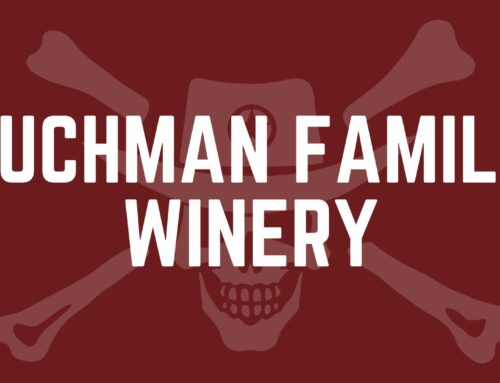Chisholm Trail History: Iconic Texas Cattle Drives
The Chisholm Trail was a key historic cattle trail in American history. It played a major role in the post-Civil War cattle industry. The trail helped Texas ranchers move their cattle to northern markets, thus shaping the economy and culture of the American West.
The Trail
The Chisholm Trail started in South Texas, near the Rio Grande, and ended in Abilene, Kansas. It was about 800 miles long. The trail passed through key cities like Austin, Waco, and Fort Worth, then into Indian Territory (now Oklahoma). This route was challenging, with plains, rivers like the Brazos and Red River, and rough terrain.
The journey began in South Texas, where cattle were gathered from vast ranches. Ranchers faced the initial challenge of herding thousands of cattle and preparing them for the long drive north. These cattle drives typically began in the spring, after the winter season, when the grass was plentiful and water sources were more reliable.
As the trail progressed northward, it encountered several significant rivers that had to be crossed. The Brazos and Red River crossings were particularly notorious. Cowboys had to carefully manage the herd during these crossings to prevent stampedes and ensure that the cattle did not stray or get lost. River crossings were perilous, with strong currents and the risk of cattle drowning. Cowboys used various techniques to keep the herd calm, such as singing to them and using experienced lead cattle to guide the rest.
In Indian Territory, the trail passed through lands inhabited by Native American tribes. The relationship between cowboys and Native Americans varied. Some tribes charged tolls for crossing their land, while others were more hostile. Cowboys had to navigate these interactions carefully to avoid conflicts and ensure safe passage.
Key Figures
Jesse Chisholm, a trader of Scottish-Cherokee descent, created parts of the trail for his trading route. He was known for his linguistic skills, speaking several Native American languages, which helped him establish trading relationships with various tribes. Jesse Chisholm’s trading route laid the foundation for what would become the Chisholm Trail.
Joseph G. McCoy, a cattle trader, promoted Abilene, Kansas, as a major railhead for cattle drives. His efforts made Abilene a central hub for cattle transportation. McCoy was a visionary who recognized the potential of connecting Texas cattle with the expanding railroad network in the North. He built stockyards, hotels, and other facilities to accommodate the influx of cattle and cowboys arriving in Abilene.
Other notable figures include Charles Goodnight and Oliver Loving, who were instrumental in pioneering cattle drive routes. Their experiences and innovations, such as the development of the chuckwagon by Goodnight, revolutionized the logistics of cattle drives, making them more efficient and manageable.
Time Period
The Chisholm Trail was heavily used from 1867 to 1884. This period followed the Civil War, a time of economic hardship in the South. Texas had many longhorn cattle but lacked markets in the South. The trail provided a way to move cattle to northern markets, thus boosting the economy. However, the rise of railroads and quarantine laws in the mid-1880s led to the trail’s decline.
During this period, the demand for beef in the northern states was high, driven by the growing urban populations and the expansion of railroads. Texas longhorns, known for their hardiness and adaptability, were the preferred cattle for these drives. Therefore, the Chisholm Trail became a vital economic lifeline for Texas ranchers, allowing them to sell their cattle at higher prices in the northern markets.
The peak years of the Chisholm Trail saw thousands of cowboys driving millions of cattle northward. These cattle drives were monumental logistical operations, requiring careful planning and coordination. The drives typically lasted several months, covering vast distances and facing numerous challenges along the way.
Challenges
Cowboys faced many challenges on the Chisholm Trail. They had to cross major rivers like the Brazos and Red River. Weather conditions could be harsh, with scorching heat, thunderstorms, and even early snowstorms presenting constant threats. Additionally, encounters with Native American tribes in Indian Territory added danger. Outbreaks of Texas Fever, a cattle disease, led to quarantine measures in Kansas, complicating the drives.
Stampedes were a constant threat during the cattle drives. A sudden noise or disturbance could cause the cattle to panic and run, leading to chaos and potential loss of cattle. Cowboys had to be vigilant and ready to react quickly to prevent stampedes or control them once they started. Experienced cowboys used various techniques, such as riding alongside the herd and using their voices to calm the cattle.
The physical demands on cowboys were immense. They spent long hours in the saddle, often riding from dawn until dusk. The rough terrain and constant exposure to the elements took a toll on their bodies. Despite these hardships, the camaraderie among cowboys was strong. They relied on each other for support and worked together to overcome the challenges of the trail.
Economic Impact
The Chisholm Trail had a big economic impact. Abilene, Kansas, became a major economic center with cattle auctions, saloons, and railhead facilities. The trail also boosted the economies of towns along its route. Key cities included:
- San Antonio, Texas
- Austin, Texas
- Waco, Texas
- Fort Worth, Texas
- Oklahoma City, Oklahoma
- Wichita, Kansas
- Abilene, Kansas
These cities grew and prospered due to the cattle trade. The influx of cattle drives brought business to local merchants, blacksmiths, and hotels. Consequently, the money generated from the cattle trade helped to develop infrastructure and services in these towns, contributing to their growth and prosperity.
In addition to the direct economic benefits, the Chisholm Trail also had a broader impact on the American economy. The beef industry expanded significantly during this period, providing food for the growing urban populations in the North and contributing to the overall economic development of the country. The success of the cattle drives demonstrated the potential for large-scale livestock transportation, paving the way for future advancements in the industry.
Cultural Impact
The Chisholm Trail contributed to the cowboy culture and the romanticized image of the American West. Cowboys’ skills in roping, riding, and cattle management were essential. The trail was featured in novels and Western films, thus cementing its place in popular culture. The cowboy lifestyle, characterized by long days, campfire meals, and trail songs, became a symbol of rugged individualism and adventure.
Stories of cowboy heroes and their adventures on the Chisholm Trail became legendary. Figures like Wild Bill Hickok and Wyatt Earp, who were associated with the cowtowns along the trail, added to the mythos of the Wild West. These stories were often romanticized in dime novels and later in Hollywood films, thus creating an enduring image of the cowboy as a heroic figure.
The cultural impact of the Chisholm Trail extended beyond the cowboy image. The trail and the cattle drives it supported played a significant role in shaping the identity of the American West. The values of hard work, resilience, and independence associated with the cowboy culture became integral to the American ethos. Therefore, the Chisholm Trail and the stories of the cowboys who traveled it continue to inspire and captivate people around the world.
Legacy
Today, the Chisholm Trail’s historical significance is commemorated through numerous markers, museums, and educational programs. The Chisholm Trail Heritage Center in Duncan, Oklahoma, offers exhibits and resources dedicated to preserving the trail’s history. Various organizations work to preserve and celebrate the trail’s legacy through historical markers and reenactments, ensuring that its story remains accessible and engaging for future generations.
Annual events and reenactments along the trail route attract tourists and history enthusiasts. These events often include cattle drives, rodeos, and educational programs, thus providing an immersive experience of life on the trail. The reenactments help to keep the history of the Chisholm Trail alive and provide valuable insights into the challenges and experiences of the cowboys who traveled it.
The legacy of the Chisholm Trail is also preserved in popular culture. Western films, books, and music continue to draw inspiration from the trail and its history. Therefore, the enduring popularity of the cowboy image and the romanticized view of the American West are testaments to the trail’s lasting impact on American culture.
Educational initiatives and resources for students and historians help keep the trail’s history alive and relevant. Schools and universities offer courses and programs focused on the history of the American West, including the Chisholm Trail. These educational efforts ensure that future generations understand and appreciate the significance of the trail and its role in shaping the history and culture of the United States.
Conclusion
The Chisholm Trail’s historical significance and cultural impact continue to be celebrated today, thus reminding us of the cowboy era’s enduring legacy. Visitors are encouraged to explore the trail’s rich history through museums, tours, and reenactments, thus gaining a deeper appreciation for this pivotal chapter in American history.
The Chisholm Trail was more than just a cattle route; it was a symbol of the pioneering spirit and resilience that defined the American West. The trail’s legacy lives on in the stories of the cowboys who braved its challenges and the towns that flourished because of it. As we continue to honor and preserve the history of the Chisholm Trail, we ensure that the spirit of the American West remains alive for future generations to experience and appreciate.
Recommended Outbound Links
- National Cowboy & Western Heritage Museum
- Abilene Convention and Visitors Bureau
- The Handbook of Texas Online





